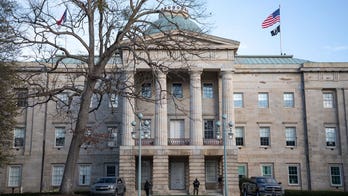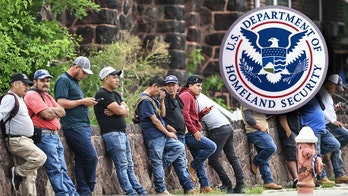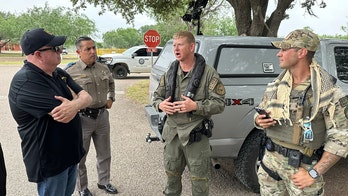President Trump extends thoughts, prayers to Harvey victims
President thanks first responders, salutes FEMA officials and the Texas governor
President Trump vowed “100 percent” support Monday to the victims of the massive storm known as Harvey, while predicting he and Congress will be able to quickly approve emergency aid to help the region recover.
“We’ve pledged our full support as Texas and Louisiana battle and recover from this very devastating and historic storm,” Trump said, during a joint White House press conference with the visiting president of Finland. “There’s probably never been anything like this.”
The president plans to visit what he called the “impact zone” in Texas on Tuesday.
He praised local officials like Texas Gov. Greg Abbott for doing a “fantastic job,” saying protecting lives is the “highest priority” in the near-term. But the next step is the recovery effort, and Trump dismissed the suggestion Monday that requests for aid could get caught up in budget discussions on Capitol Hill and even increase the possibility of a government shutdown.
Trump said the storm recovery aid has “nothing to do” with that issue.
“You’re going to get your funding,” Trump told a Texas reporter. “I think you’ll be up and running very, very quickly.”
While saying lives have been “totally upended” by the storm, Trump praised the “unbreakable spirit” of residents in both states.
“The rebuilding will begin,” Trump said.
The president met with Finland’s President Sauli Niinistö in between overseeing the federal response to the disastrous Hurricane Harvey, which was downgraded over the weekend to a tropical storm as the storm and massive flooding it caused inflicted heavy damage across Texas and Louisiana.
He’s handling the storm response as his administration simultaneously deals with questions over several major developments in Washington – including the president’s transgender military ban directive, Trump’s pardon of former sheriff Joe Arpaio and more resignations at the White House. Further, the president is looking to jump-start his legislative agenda – especially on tax reform – when Congress returns from the August recess.
But the Harvey response is taking the front seat, with the storm being the strongest to hit Texas in decades, and the fiercest to hit the U.S. in 13 years.
On Sunday, incessant rain covered much of Houston in turbid, gray-green water and turned streets into rivers navigable only by boat. In a rescue effort that recalled the aftermath of Hurricane Katrina, helicopters landed near flooded freeways, airboats buzzed across submerged neighborhoods and high-water vehicles plowed through water-logged intersections. Some people managed with kayaks or canoes or swam.
The storm also has posed the first test for Trump’s leadership in a disaster response. The president has touted those efforts via Twitter, and did so again at the press conference.
At the local level, officials on Monday were releasing water from Houston-area reservoirs overwhelmed by Harvey, trying to release pressure on two dams that were at risk of failing from the immense floodwaters that have filled the city. The move aimed at protecting the downtown business district risked flooding thousands more homes, and the nation's fourth-largest city expected to get still more rain after a chaotic weekend of rain, rising water and rescues.
As many as 50 counties are affected by the flooding, Federal Emergency Management Agency Director Brock Long said Monday.
The Associated Press contributed to this report.





